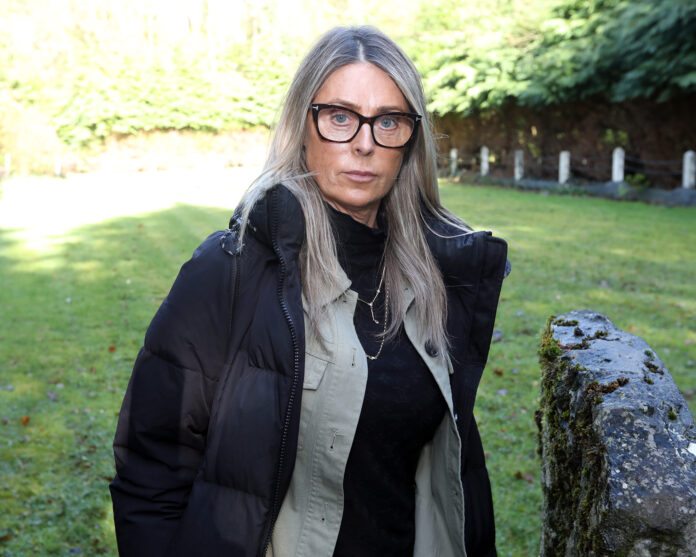
“When I was a child, I told my parents that I hope we all die in a car crash so that none of us will have to miss each other.” Those were the arresting words uttered by Ann Connolly from Corbally, such was her fear of separation and abandonment, writes Limerick Post reporter Bernie English.
AS A child, Ann insisted on sleeping in her parents’ bed and, when she got too big for that, she says she “used to sneak in and sleep on the floor beside them or hide in the wardrobe and sleep there, just so I was close to them”.
It was many years and counselling sessions later that Ann got to the bottom of the anxiety that haunts her still, learning that it stems from being brought back and forth as a three-week-old baby from a mother and baby home in Roscrea, County Tipperary.
“My birth mother didn’t want to sign the adoption papers. She was forced into it, like so many other women. In the meantime, my adoptive parents had to bring me back to Sean Ross Abbey back and forth for a year. You wouldn’t think that something that happened at that age that you can’t even remember would affect you so much, but it does,” the 56-year-old told the Limerick Post.
Born on November 28, 1968, at Sean Ross Abbey mother and baby home, Ann was adopted out less than a month later on December 22.
‘Cold, horrifying spaces that no mother should ever have endured’
As a young adult, curious about where she came from, Ann went to Sean Ross Abbey in search of information about her birth mother.
She met with a nun called Sister Hildegard who told Ann she would look for information but only after she gave a donation. This happened on several occasions, and, like many others desperate to know their past, she handed over money.
However, she was never given any information. Eventually, Ann tracked down her birth mother herself by scouring the telephone book using a surname.
“It was very emotional. I did it on my own, without any counselling. I had just become a young mother myself, and, looking back, maybe I should have waited until I was older, but that’s what happened.”
Decades later, Ann returned to Sean Ross Abbey. This time, she saw the place for what it really was.
“I went in the large red front door and found myself in the ornate hallway. To the left and right were two grand rooms, one of them was the very room where I had met Sister Hildegard all those years ago,” she recalls.
“A beautiful staircase led up to the nuns’ quarters. It had beautiful plaster cornicing on the ceilings, it was fancy.
“Then I went downstairs. That’s when I saw the real Sean Ross Abbey. The stark contrast between the nuns’ rooms and where the mothers and babies were kept was shocking. It was dark, uninviting, cold, and dismal – it was like stepping into a dungeon.
“I saw the rooms where the babies were born, cold, horrifying spaces that no mother should ever have endured. I saw the laundry where the women worked long, hard hours.
“I also saw the viewing room, where the babies were kept before being taken from their mothers forever. The conditions were horrific.
“I saw the burial ground where the babies we know about were buried. I am lucky I’m not in one of those graves.
‘How dare you decide whose trauma is valid’
Most dreadful of all, Ann says, is the portion of ground beside the ‘Angels Plot’, where geophysical surveys have suggested unexplained disturbances.
“The survivors of Sean Ross Abbey, including myself, are fighting for justice. We are fighting to find the missing babies for the mothers who are still searching. These women are nearing the end of their lives, they deserve to know where their children are. The fact that the government hasn’t acted to excavate the site at Sean Ross Abbey and fully investigate the burial grounds is nothing short of a national disgrace.”
The cut-off point at which survivors are entitled to redress is also an issue, Ann told this newspaper.
“The government has the audacity to dictate who qualifies for redress and who doesn’t. How dare you decide whose trauma is valid and whose isn’t. Survivors like me, whose lives have been shaped by this place, are being told we’re not entitled to redress because we don’t meet your arbitrary timelines,” she says.
‘We are fighting for every survivor’
Of her adoptive parents, Ann is explicit in her praise.
“I had incredible adoptive parents. If I searched the world over, I couldn’t have been more loved. But what happened to me, what happened to so many others, was a direct result of the cruel policies of the Irish government and the Catholic Church,” she says.
“My entire life has been haunted because of this place. I’ve spent years battling the trauma it caused, and I know I’m not alone. The survivors are disgusted, angry, and fuming. We are not just fighting for ourselves; we are fighting for every survivor who has been ignored, for every mother who never found her child, and for every baby buried in an unmarked grave.”
Ann has sent an email outlining her anger and demanding justice to every member of the houses of the Oireachtas.
“This is not just my story; it is the story of thousands of us across Ireland and beyond,” she explains.
“Survivors want to know: Who will pick this up? Who will finally take action? Who has the courage to do what’s right and fight for justice for the survivors of these institutions? The mothers and babies deserve better.”


